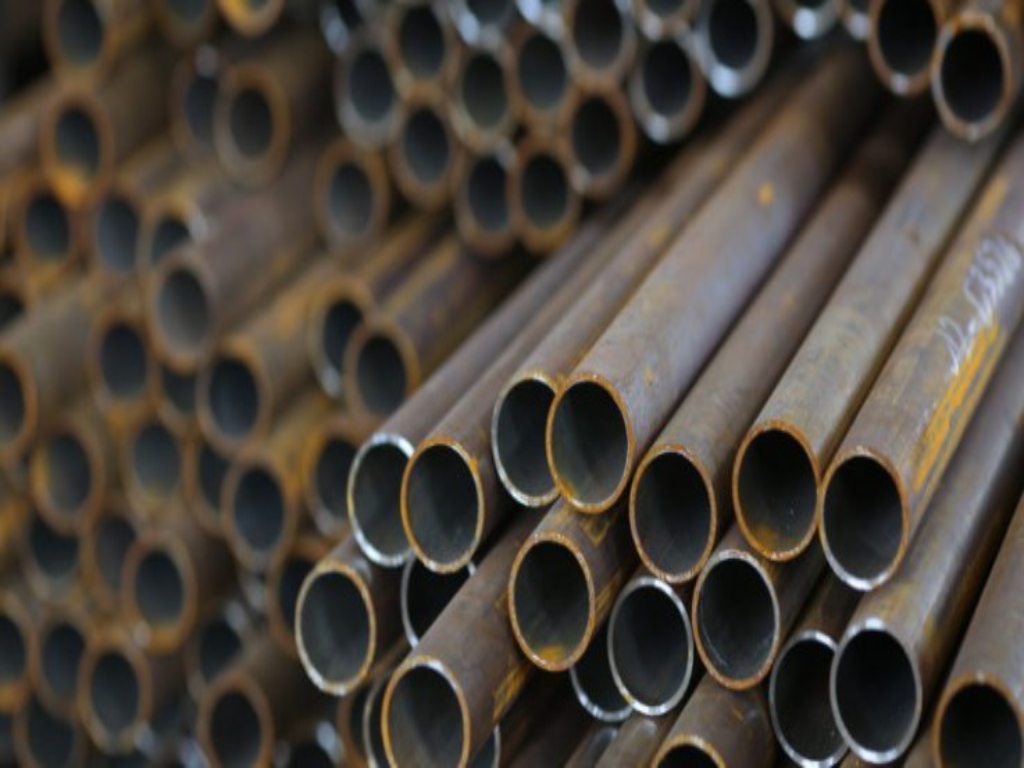Pure Iron is of little use as an engineering material because it is too soft and ductile. When iron cools and changes from a liquid to a solid, most of the atoms in the metal pack, tightly together in orderly layers. Some, however. become misaligned, creating areas of weaknesses called dislocations. When a piece of iron is put under stress, layers of atoms in these areas slip over one another and the metal deforms. This begins to explain the ductility of soft iron. By adding carbon to the iron, however, we can produce a range of alloys with quite different properties. We call these the carbon steels. An alloy is a mixture of two or more chemical elements and the primary element is a metal.
Carbon Steels: their properties and uses
Mild Steel: carbon content between 0,1% and 0,3%. Properties: less ductile but harder and tougher than iron, grey color, corrodes easily. Uses girders or beams, screws, nuts and bolts, nails, scaffolding, car bodies, storage units, oil drums.
Medium carbon steel contains between 0,3% and 0,7% carbon. Properties: harder and less ductile than mild steel, tough, and have high tensile strength. Uses: it’s used for the manufacture of products which have to be tough and hard-wearing like gears, tools, keys, etc
High carbon steel contains between 0,7% and 1,3% carbon. Properties: Very hard and brittle material. Uses: It’s used for cutting tools and products which have to withstand wear such as guillotine, springs, etc.
Stainless steel is iron and chromium alloys. A wide range of steels is available with chromium content between 13% and 27%. Properties: Chromium prevents rusting with an oxide film. Ductility, hardness, and tensile strength. It’s also a shiny attractive metal. Uses Cutlery, sinks, pipes, car pieces, etc.
Grey Cast Iron is an alloy of iron (94%), carbon (3%) silicon (2%), and some traces of magnesium, sulfur, and phosphorous. Properties: brittle but extremely hard and resistant, it corrodes by rusting, Uses pistons, machinery parts, streets lamps, drain covers, tools.
Other chemical elements can be added to steel, to improve or achieve certain properties. Here are some examples:
- Silicon makes the alloy magnetic and improves elasticity.
- Manganese makes the alloy harder and heat-resistant. It’s used to make stainless steel.
- Nickel improves strenght and prevents corrosion.
- Tungsten makes the steel harder, more heat-resistant and prevents corrosion.
- Chromium makes the alloy harder and tougher and more rustproof.
